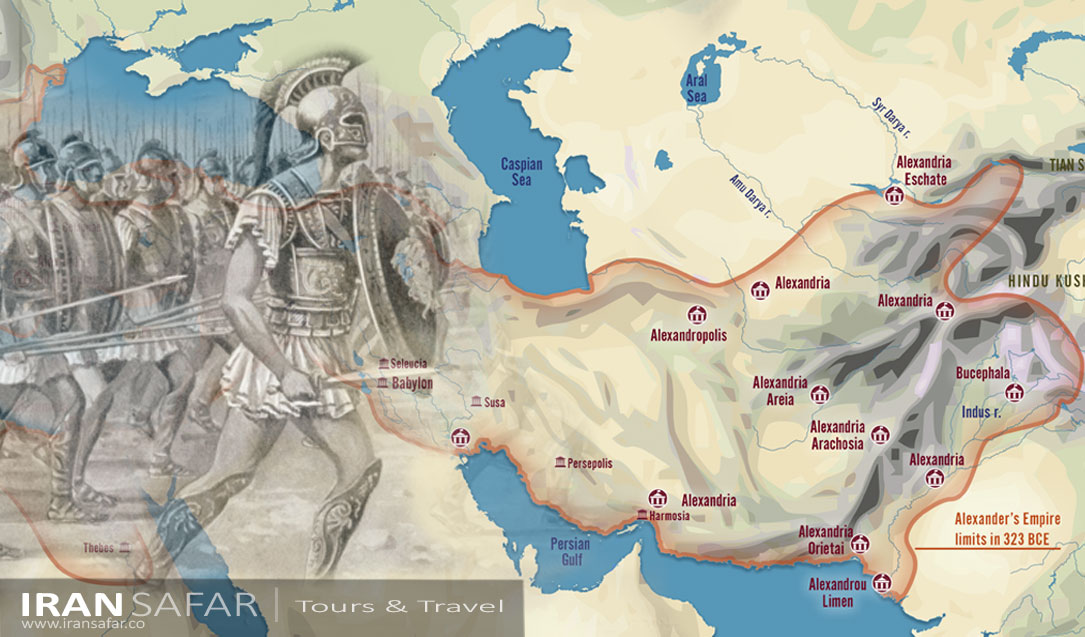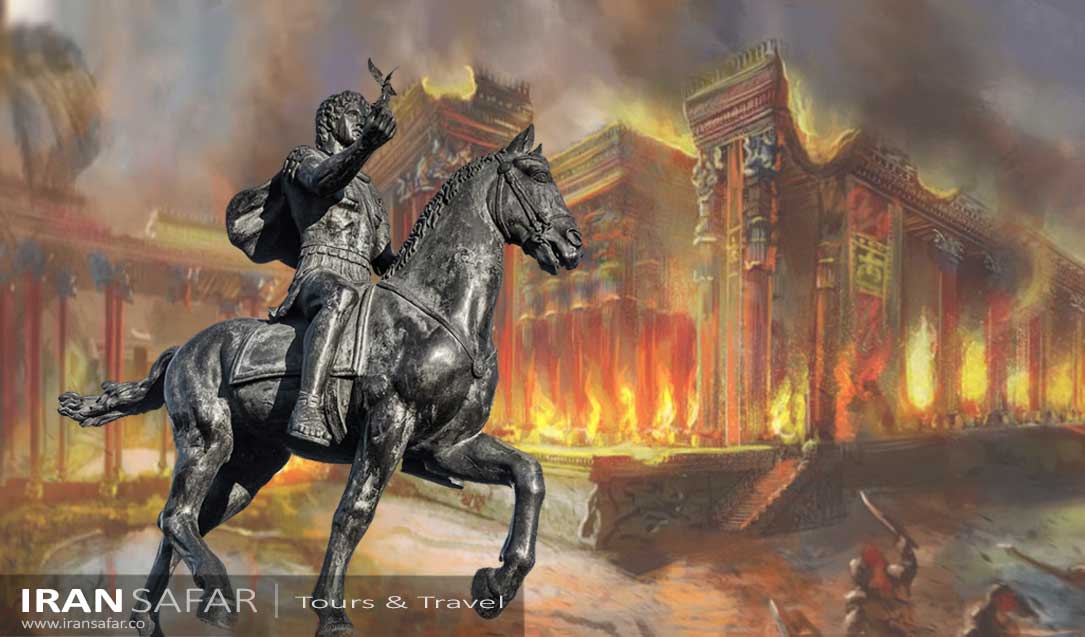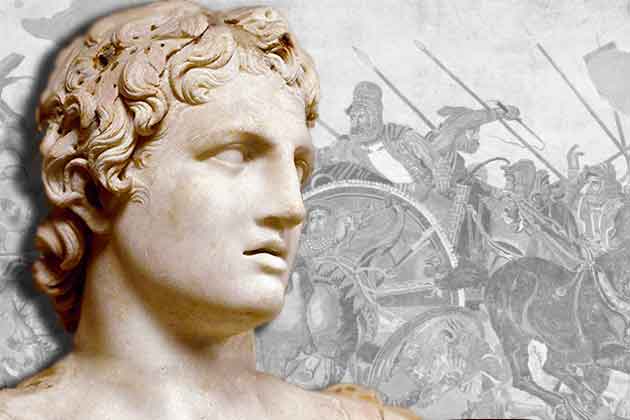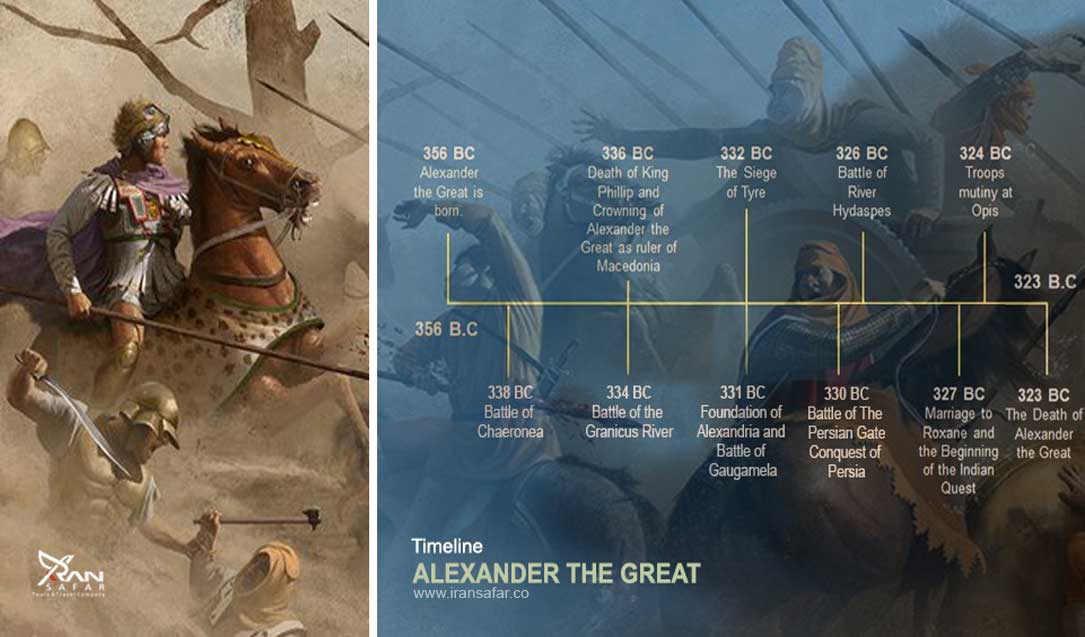Alexander the Great is one of the most famous figures in the world history. He is considered one of the best conquerors in history who did not lose in any battle and created one of the largest empires of the time when he was less than thirty years old.
This young Macedonian warlord, who became king at the age of twenty, conquered the ancient world until his sudden death at the age of thirty-two. His military genius is one of the wonders of history, and because of this genius, this success is an impressive feat in itself, but the story of Alexander the Great is a rich and complex story, the reasons of which you will read below.
Life of Alexander The Great
Alexander the Great, also known as Alexander III or Alexander of Macedonia, (born 356 BCE, Pella, Macedonia [northwest of Thessaloníki, Greece]—died June 13, 323 BCE, Babylon (?)), king of Macedonia (336–323 BCE), who overthrew the Persian empire, carried Macedonian arms to India, and laid the foundations for the Hellenistic world of territorial kingdoms. Already in his lifetime the subject of fabulous stories, he later became the hero of a full-scale legend bearing only the sketchiest resemblance to his historical career.
Early Life
Alexander was born in Pella, the ancient seat of Macedonia. His father was Philip II of Macedon, and his mother was Olympias, daughter of Neoptolemus (King of Epirus). Alexander was trained and taught by Aristotle from the age of 13 to 20, and this great philosopher made him fond of philosophy, medicine and scientific research. In 340 BC, when king Philip invaded Byzantium, he entrusted the administration of Macedonia to Alexander, and he also defeated a group of Thracians. Two years later, Alexander became the commander of the left wing of the Macedonian army in the Battle of Chaeronea, a battle in which Philip won the victory over the united Greek city-states. A year later, Philip divorced Olympias. After a dispute with Philip, Alexander fled to Epirus with his mother and then went to Iloria. Soon after, father and son reconciled and Alexander returned to Macedonia.
Childhood Influences: King Philip II’s Tutelage
Under the tutelage of his father, King Philip II, Alexander received extensive military training and learned the art of warfare. King Philip II, an accomplished military strategist, instilled in his son the importance of discipline, tactics, and strategic planning.
Accession to the Throne
At the age of 18, Alexander participated in the Battle of Chaeronea alongside his father. This battle against the combined forces of Athens and Thebes showcased Alexander’s tactical brilliance and valor. Despite the Macedonian victory, tragedy struck as King Philip II was assassinated, thrusting Alexander into the throne at the tender age of 20. In 336 BC, Alexander’s father Philip was assassinated by his bodyguard Pausanias of Orestis. Alexander was only 20 years old when he took the Macedonian throne and killed his rivals before they could challenge his rule. He also suppressed independent rebellions in northern Greece. When Alexander cleared Macedonia from the existence of the enemy, he left there to continue his father’s rule, the rule of Macedonia over the world.
Conquest of Persia
With a thirst for glory and a desire to fulfill his father’s dream of conquering Persia, Alexander was always thinking of marching to the Persian Empire and he was brought up with this idea. In addition, he needed the wealth of Persia to maintain the army that Philip had built. The bravery of ten thousand Greek soldiers and Spartan ruler Agesilaus in the successful military operations in the territory of Iran revealed the vulnerability of this empire and Alexander was able to defeat all the Iranian armies with his powerful cavalry.
Alexander set out on a military campaign that would reshape the ancient world. His expeditions were characterized by relentless determination, ingenious strategies, and remarkable leadership.
Battle of Granicus
In the spring of 334 BC, Alexander crossed the Dardanelles and entered Asia after he appointed Antipater – Philip’s loyal agent- with more than 13,000 troops on his behalf in Europe. He himself took command of the great invading army, which included Macedonians and Greeks. The second position in Alexander’s army was held by a commander named Parmenion (Parmenio), who had gained a base in Asia Minor during Philip’s time. This army was accompanied by surveyors, engineers, architects, scientists, courtiers and historians, and it seems that Alexander had in mind unlimited operations from the beginning. After visiting Ilium (Troy), a sentimental gesture inspired by Homer, in May or June 334 BC by the Granicus River, near the Sea of Marmara, he faced the first Iranian army led by three Shahrbans (= governors; in Greek: satraps) of Darius III, the emperor of Iran,
The plan of the Iranian army to take Alexander into the river and kill him in the battle was close to victory; But the the Iranian army fell apart and Alexander won. Many of the Greek mercenary soldiers leaded by Memnon were massacred and the rest who survived were sent to Macedonia. This victory opened the gates of Western Asia Minor to the Macedonian army and the cities of this region, including Sardis, were quickly subjugated.
As in future battles, Darius and his army generals continually underestimated the power of the young Alexander’s army.
The Invasion of Persia: Darius III and the Battle of Granicus
In 334 BC, Alexander led his army across the Hellespont, marking the beginning of his conquest of the Persian Empire. The first major confrontation came at the Battle of Granicus, where Alexander’s forces clashed with the Persian army led by King Darius III. Despite being outnumbered, Alexander’s troops emerged victorious, securing a foothold in Asia Minor.

Alexander moved southward along the coast of Asia Minor to Halicarnassus, where he defeated Memnon for the second time. Finally, after waiting for over a year, Alexander and his forces faced Darius III’s troops at Issus in November of 333 BCE where the Persians suffered defeat again.
Alexander then captured Darius’ family—his mother, wife, and daughters. Wishing to avoid further conflict and with hopes that he would regain his family, Darius
Darius III asked for a peace treaty by offering a ransom of 10,000 Talani for the release of his family and also giving over all the lands that Alexander had acquired until then. He also offered Alexander his daughter’s hand in marriage. However, Alexander rejected the offer by simply saying there could never be two suns as it would upset the world order. He replied that since he is now the king of Asia, it is up to him alone to decide on the territorial divisions.
Alexander continued his campaigns to take control of Syria and most of the Mediterranean coastal areas. He continued his campaign and moved along the coast, capturing the coastal city of Tyre in a seven-month siege. Alexander slaughtered the men who were of fighting age and sold the women and children into slavery.
As he traveled southward, he was welcomed in both Jerusalem and Egypt, for they had felt the wrath of the Persian army. After laying out the plans for the future city of Alexandria and visiting the temple at Siwa, Alexander prepared for his next military engagement with Darius.
Battle of Gugamela
In 331 BC, Alexander left Egypt and moved to Mesopotamia and defeated Darius once again in the Battle of Gugamela. Darius once again fled from the battlefield and his rival followed him to Erbil. The Battle of Gugamela was the last and most decisive encounter between Alexander and Darius. Darius fled through the mountains to Ekbatana and was later murdered by one of his satraps. Alexander conquered the Persian capital of Babylon and this victory signified the end of the Persian Empire founded by Cyrus II, commonly known as Cyrus the Great, and made Alexander the master of southwest Asia.
The Battle of Gaugamela: Decisive Victory
Arguably one of his greatest triumphs, the Battle of Gaugamela in 331 BC witnessed Alexander’s forces confronting the Persian army once again. Employing a combination of tactical brilliance and audacity, Alexander secured a resounding victory, defeating Darius III and effectively toppling the Achaemenid Empire.

Fall of the Persian Empire
Alexander went from Babylon to Susa, – the main Achaemenid capital – and looted the legendary wealth of that city. He sent most of his army to the ceremonial capital of Persians, Persepolis, through the royal road, and he himself left for that city with hand-picked soldiers. Since the passage of the Persian Gate was blocked by Ariobarzanes and his troops, Alexander had to ambush them through that passage. After breaking the resistance of Ariobarzanes, Alexander rushed to Persepolis.
Why did Alexander the Great burn Persepolis?
Upon entering Persepolis, Alexander allowed his troops to plunder the city for several days. He stayed in Persepolis for five months and it was during this time that the eastern part of Xerxes palace caught fire and spread to the rest of the city. Various reasons, including drunkenness or deliberate revenge for the burning of the Acropolis in the second war between the Greeks and the Iranians, have been considered the cause of this incident.
Cultural Integration: The Fusion of East and West
One of Alexander’s unique achievements was the integration of Persian and Greek cultures. He encouraged his soldiers to marry Persian women, fostering a sense of unity and cultural exchange. This blending of traditions laid the groundwork for the Hellenistic civilization that flourished long after his death.
Alexander’s Death
At age 32, Alexander died in Babylon, on either 10 or 11 June 323 BC. There are different versions of Alexander’s death, differing slightly in details. Various reasons have been speculated among which, diseases caused by alcohol and strychnine poisoning. However, few sources have defended this theory. According to a report published by the University of Maryland School of Medicine in 1998, he probably died of typhoid fever. According to reports from old texts, he had tremors, sweating and severe fever, which are symptoms of an infectious disease. Accordingly, Alexander had severe abdominal pain that forced him to scream. Some sources mention that he became mute in the last days of his life
Given the propensity of the Macedonian aristocracy to assassination, foul play featured in multiple accounts of his death. Diodorus, Plutarch, Arrian and Justin all mentioned the theory that Alexander was poisoned.
Succession
As Alexander continued his conquests, he laid the foundation for what would be known as the Hellenistic period—a time when Greek culture, art, and language permeated the vast territories under his control.
After Alexander’s death (323 BC), his empire was divided among his generals, and most of the Asian parts, of which Persia was the core, reached Seleucus I. Thus Iran came under the rule of the Seleucids (330-250 BC). Seleucids ruled over large parts of western Iran for eighty years, but there was almost no peace in their territory. After a while, the Parthians expanded their influence and finally they were able to destroy the Seleucids.
Alexander the Great Timeline
The Legendary Journey of a Conqueror
The timeline of Alexander the Great reflects the extraordinary journey of a conqueror who reshaped the ancient world. From his early days under the guidance of King Philip II to his triumphant victories and the creation of the Hellenistic Empire, Alexander’s life and achievements continue to captivate and inspire. His legacy endures through the annals of history, serving as a testament to the indomitable spirit of human ambition and the transformative power of leadership.
This is a chronological summary of the life and expeditions of Alexander the Great:
Alexander the Great FAQs




Nice and ok
He was a Macedonian king. Not greek
Macedonians were not Greek at that time.Greeks call them Barbarians that spoke deferent language then the Greek’s.
bur Greek:)))